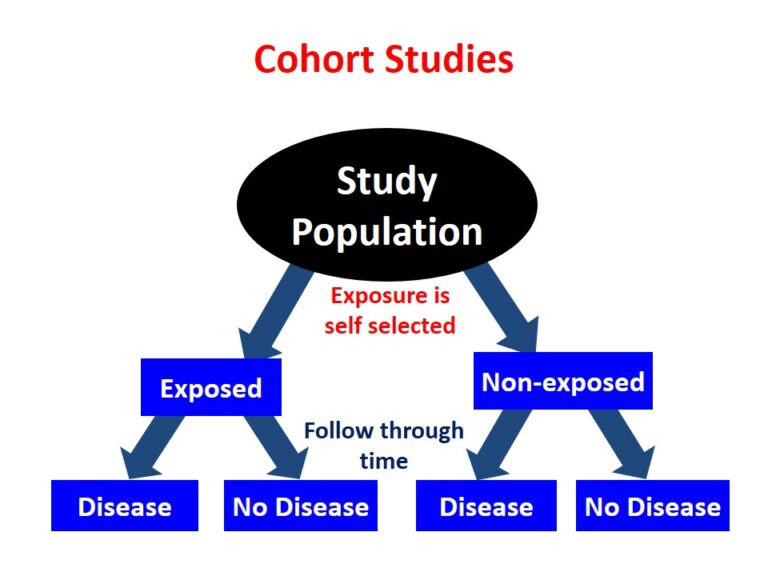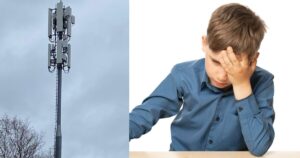- The Cosmos study on health risks from mobile phone use was initially funded by the telecommunications companies Ericsson,Telia, Telenor, Nokia, Elisa. MMF and British telecom companies also contributed.
- The study was carried out by researchers with a long tradition of dismissing health risks from mobile phone radiation.
- Scientists argued it would be “important to convincingly rule out health risks”.
- Studies funded by telecom companies overwhelmingly show results that are favorable to the telecom companies.
- Research has shown extensively that there are health risks associated with mobile phone radiation, including increased risk of brain tumors, oxidative stress and DNA damage.
- The study has several shortcomings, including the fact that those who used cell phones the most, were compared with those who used the phone less.
The international Cosmos study
On March 8, 2024, the Karolinska Institute (KI) published a news text about the results of a new brain tumor study. The headline notes that “mobile phone users who talk for a long time do not have an increased risk of brain tumor” and further:
“A large international research study, COSMOS, initiated by the Karolinska Institute and the Imperial College, London, UK, has studied over 250,000 mobile phone users to investigate whether those who use mobile phones a lot and for a long time have a higher risk of brain tumor than others. The study, published in Environment International, found no association between long-term mobile phone use and brain tumor risk.”
Funding from Ericsson and other telecom companies
The study was initially funded by three Swedish telecom companies: Ericsson, Telia and Telenor. The study appears to have been initiated by Ericsson and the Swedish scientists at KI. Representatives of Ericsson contacted researchers Anders Ahlbom and Maria Feychting at KI back in 2005. They agreed to collaborate on a research project, with industry paying 50% of the costs. This was described in an article in a Swedish weekly magazine, Ny Teknik in 2012. It revealed that the industry and the researchers first discussed arrangements and funding before turning to Vinnova, a Swedish governmental research agency, to draw up an agreement. In 2005, when the researchers and Ericsson started meeting, Ericsson made certain demands on “quality criteria” and had views on the design of the study, according to Christer Törnevik, head of research at Ericsson. It was also Törnevik who in 2022 acted to censor the first case study showing harmful health effects of 5G.
The Swedish researchers and Ericsson turned to Vinnova and asked the agency to act as an intermediary and establish a so-called firewall agreement. This gives the appearance of financial independence from the industry. Ny Teknik’s journalist Monica Kleja also revealed that Anders Ahlbom and Maria Feychting met representatives of the industry at repeated meetings in 2006, 2009 and 2011, after they entered into an agreement with Vinnova on the firewall.
“Completely independent”
Anders Ahlbom claims in the Ny Teknik article that he and Maria Feychting are “completely independent” despite their funding and contacts with industry.
Ny Teknik wrote: “Maria Feychting, professor of epidemiology at Karolinska Institutet, KI, recently became vice chair of the International Commission on Non-Ionizing Radiation Protection (ICNIRP), which sets limits for mobile phone radiation and other electromagnetic fields.
At the same time, she partly finances her research on health risks and mobile telephony via the telecom industry, which she openly reports in her declaration of disqualification to ICNIRP. Telia Sonera, Ericsson and Telenor contribute 50 percent of the cost of the Swedish part of the Cosmos research project (with over 50,000 mobile subscribers), so far about SEK 7 million. Maria Feychting sees no conflict in leading Icnirp’s activities while receiving industrial funding.”
The Finnish part of COSMOS has also been funded by the telecom industry (Nokia, TeliaSonera, Elisa and the Mobile Manufacturers Forum, MMF) as well as the UK part of COSMOS (funded by MTHR which in turn was partly funded by the telecom industry).
The aspect of industry funding
Industry funding is a factor that should be reported in order for the public to evaluate the credibility of the study. Industry-funded studies have overwhelmingly been shown to provide beneficial results for industry and should therefore be taken into account when evaluating the results. For example, according to a study published in 2007:
“Interpretation of the results of studies on the health effects of radiofrequency radiation should take funding into account”.
“Important to convincingly rule out health risks”
KI describes the background of the study in the following way:
“There is no biologically based hypothesis concerning the health risks associated with the type of electromagnetic fields present in mobile telephony. However, it is a new technology that has rapidly spread to a very large proportion of the population. If any aspect of mobile telephony or radio-frequency electromagnetic fields that could pose a health risk is incompletely understood or overlooked, this is of the utmost importance. Given the concerns of the public and policy makers, it is also important to convincingly rule out health risks, where none exist. There are already studies in this area and some health concerns can be dismissed with reasonable certainty on the basis of these studies. This applies in particular to the risk of brain tumors within about 10 years. However, important questions remain. Outcomes other than brain tumors have been studied to a limited extent or not at all. Existing studies have a retrospective design and use historical information on mobile phone use, leading to reporting errors and difficulties in interpretation.”
Here, KI and Anders Ahlbom who seem to be the author of the text, has clearly misrepresented the state of knowledge. Repeated studies on cancer risks from mobile phone use have previously shown increased risks. Further, it has been shown in hundreds of studies that mobile radiation can damage cellular DNA and cause oxidative stress, two established risk factors for cancer development. Already in the 1990s, research showed an increased risk of cancer in animal studies, damage to cellular DNA, and in the early 2000s the first studies showed an increased risk of brain tumors from mobile phone use. Instead, the telecom companies’ view is that the research was prompted by “concerns among the population and decision-makers” and not by research results showing that radiation can cause cancer. A majority of researchers in the field have pointed out that research has shown that radiation can cause harmful health effects and that in 2011 radiation was classified by IARC as “possibly carcinogenic”.
The Karolinskas argument that it would be “urgent to convincingly rule out health risks”, reinforces indications of industrial influence.
Researchers with history of dismissing risks
The researchers behind the study, published in early March 2024, have a long history of dismissing the health risks of radiation from wireless technologies, which is beneficial to telecom companies and in their interest. They have also for many years received research funding from telecom companies and several have been members of ICNIRP, the organization that has developed limits for maximum radiation exposure that are beneficial to and of great importance to the telecom industry. The ICNIRP limits are seriously inadequate for protection against health hazards but still adopted by most countries in the world and also recommended by the WHO and the EU. They protect only against immediate heating effects and exclude protection against all other health effects that are not due to heating.
Anders Ahlbom. Initially, Anders Ahlbom, professor at KI, was involved (see KI’s background text and Ny Teknik’s article), but he is not a co-author of the article now published in 2024. Anders Ahlbom was a member of ICNIRP during the years 1996-2008. In addition in 2011 it was discovered that Anders Ahlbom was involved in his brother Gunnar Ahlbom’s consulting company, which provided services directly to the telecom industry. Due to this undeclared conflict of interest Anders Ahlbom was excluded from the IARC expert evaluation of cancer risks from this type of radiation in 2011. Furthermore, the brother Gunnar Ahlbom had been employed by Telia in Brussels, as a lobbyist for this largest Swedish telecom operator for many years. During the very same period Anders Ahlbom was presented as an independent expert for ICNIRP, the Swedish Radiation Safety Authority, WHO and the EU and as late as 2012 he himself claimed he was “completely independent”.
Anders Ahlbom has downplayed the increased risks of brain tumors reported in the Interphone study in 2010 and also his own study published in 2004. He has claimed in 2012, i.e. five years after the study began but 12 years before the results of the study were published, that there is no particular reason to suspect that there are any health risks associated with mobile telephony. This shows that he does not have an objective approach to research in this area. Anders Ahlbom was chairman of the Swedish Radiation Safety Authority’s expert group in 2003-2011 and chair or member of the EU-commissions expert group SCENIHR in 2007 and 2009.
Maria Feychting. She is a long-time collaborator of Anders Ahlbom, Maria Feychting has also been a member of ICNIRP for many years (2008-2020) and vice-chair of the organization until 2020. In 2010, Maria Feychting also downplayed the increased risks of brain tumors from mobile phone use observed in the Interphone study. A year later, however, mobile phone radiation was classified as “possibly carcinogenic” after an evaluation by 30 international experts at the IARC, mainly because Interphone showed an increased risk of brain tumors among the heaviest mobile phone users. In 2011, Maria Feychting published a study on brain tumor risks for children using mobile phones, Cefalo, which in a press release from KI claimed to show reassuring results. However, this study also showed an increased risk of brain tumors despite the fact that Maria Feychting and her colleagues manipulated the study. This study was also partly funded by the telecom industry. Maria Feychting was secretary of the Swedish Radiation Safety Authority’s expert group 2003-2011.
Joachim Schuz. Joachim Schuz also has a long history of dismissing evidence of health risks. He is co-responsible for the worst ever published study on brain tumor risks for mobile phone users, the so-called Danish cohort, which has been called “the world’s largest mobile phone study”. The study, initially funded by Danish telecom companies, excluded corporate users, by far the heaviest users in the early 1990s, as well as anyone who got a mobile phone subscription after 1995. For example, in the late 1990s, corporate users in Sweden used their mobile phones 5 times more than private users, due to the high cost of calling with mobile phones during this period. These largest mobile phone users by far ended up in the control group, which is supposed to be completely unexposed, as well as anyone who signed up for a mobile phone subscription after 1995. Because of this massive misclassification of exposed versus unexposed, the results are uninformative. Nevertheless, Joachim Schuz as well as Maria Feychting and Anders Ahlbom have claimed the results to be valid and important even though, as epidemiologists, they should be well aware of the study’s serious inherent flaws. Joachim Schuz was also partly responsible for the manipulated study on brain tumor risks in children, Cefalo and he is author of several other studies reporting no health risks. He also co-authored the SCENIHR report for the European Commission in 2015 that dismissed the health risks of mobile phone radiation on cancer risks.
Aslak Harbo Poulsen and Christoffer Johansen. Both are co-authors of the Danish cohort described above and have for a number of years dismissed the health risks of radiation from wireless technologies.
Anssi Auvinen. Finnish scientist, member of ICNIRP, funded for the Finnish part of Cosmos by Finnish telecom companies (Nokia and Elisa) and the industry organization Mobile Manufacturers Forum (source). Anssi Auvien has also dismissed the health risks of radiation for many years, including in an expert report (SCENIHR) for the EU in 2015 together with Joachim Schuz.
The new study’s results
In the press release of 8 March, KI claims that the Cosmos study did not find “any association between long-term mobile phone use and the risk of brain tumor.” The study, which was initiated almost 20 years ago, has asked more than 264,000 people from five countries detailed questions during the years 2007-2013 about mobile phone use during the years 1985-2013. Follow-up on the number of brain tumor cases among the participants has been done until 2015-2017 depending on the participating country).
The number of participants from each country was:
Sweden: 50,163 participants
Finland: 11 209
Denmark: 25 768
Netherlands: 87 689 (90% of the participants are women over 50 years old and as many as 85% had used the mobile phone less than 465 hours in total. Only 1.4% had used their phone for more than 1062 hours.
UK: 94 335 (response rate 3.4%).
The results reported in the published study is that there was no increased risks of glioma, meningioma or auditory nerve tumor, neither for those who used the mobile phone for more than 15 years nor for the group that used the mobile phone the most, i.e. more than 1908 hours in total.
Criticism of the study’s method
Those who used the mobile phone the most, more than 50% of the total call time, have been compared with those who used the mobile phone less than 50% of the total call time. This leads to an underestimation of the risk because the exposed people were not compared with unexposed people but with a group of other exposed people. Below is a picture of how cohort studies should be conducted, i.e. an exposed and an unexposed group are compared in terms of disease occurrence.

Furthermore, the researchers have not analyzed the risk of brain tumor on the side of the head where the mobile phone is mostly used, even though questions about this were asked to the participants. In addition, the use of cordless (DECT) telephones was not taken into account even though participants were asked detailed questions about cordless telephone use. All those who had a brain tumor before the start of the study have also been excluded, more than 600 brain tumor cases, which theoretically could have affected the results since the study concerns the use of mobile phones from 1985 onwards.
Conclusion
The result is thus expected given the telecom companies that initially funded and initiated the study. They have an interest in showing that mobile phones do not have negative health effects. Furthermore, the result is expected given the researchers who conducted the study who have a long history of dismissing evidence of health risks. Several of them have been members of ICNIRP and have also received research funding from the telecom industry. In view of the above, the results have low credibility. However, Cosmos will be used as effective evidence for the telecom industry in lawsuits regarding brain tumors claimed to be caused by mobile phone use. The study will also be used in expert opinion reports as an argument that radiation from wireless technology does not cause cancer. The investment has been successful for the telecom industry.
Some sources referred to in this article:
https://www.sciencedirect.com/science/article/pii/S0160412024001387
https://nyheter.ki.se/mobiltelefonanvandare-som-pratar-lange-har-inte-okad-risk-for-hjarntumor
https://ki.se/imm/cosmos
https://www.fortunejournals.com/articles/aspects-on-the-international-commission-on-nonionizing-radiation-protection-icnirp-2020-guidelines-on-radiofrequency-radiation.html
https://microwavenews.com/DanishCohort.html
https://microwavenews.com/news-center/iarc-rf-cancer-review-ahlbom-affair
https://www.nyteknik.se/nyheter/stralforskare-kringgar-avtalet-om-oberoende/1752342
https://www.svt.se/opinion/karolinska-institutet-manipulerade-studie-om-hjarntumorrisker-for-mobilanvandande-barn
https://www.icnirp.org/cms/upload/doc/AuvinenDoI_2017.pdf







